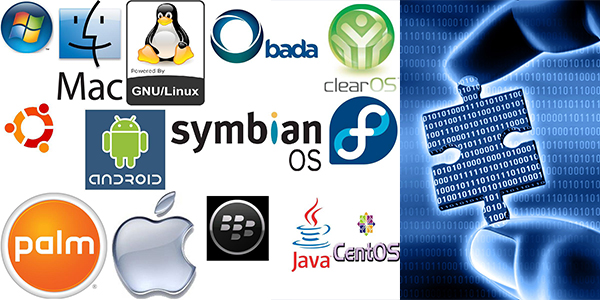Career Definitions – Computer Software
[ads2]
BIO-MEDICAL COMPUTER (DEG)
Bio-medical Computer Software course deals with operation of computerized medical equipment.
[divider style=”solid” top=”20″ bottom=”20″]
COMPUTER AIDED DESIGN & DRAFTING (CER/DIP/DEG/PGDIP/PG)
CAD usually involves using computers to establish the structures and materials that will be used in new product and to create the diagrams, drawings and tests of specification that are required for manufacturing the product. It also involves using computer to determine the manufacturing processes and equipment that will be required for the product and to monitor and control the automated aspects of the actual manufacturing of the products.
[divider style=”solid” top=”20″ bottom=”20″]
COMPUTER AIDED MANUFACTURE (DIP)
CAM technicians use computer to help design improve modify or produce manufactured and manufactured systems. Technician’s specialised, work in the design and drafting activities associated with new products, research & development. They must combine drafting & computer skills.
[divider style=”solid” top=”20″ bottom=”20″]
COMPUTER APPLICATIONS (CER/DIP/DEG/PGDIP/PG)
This course deals with training persons in financial accounting, inventory system, pay roll and other application of computers.
[divider style=”solid” top=”20″ bottom=”20″]
COMPUTER APPLICATIONS AND OPERATIONS RESEARCH (STC/VOC/PG)
This course deals with training person in financial accounting, inventory system, pay roll and other applications of computers. The use of analytic methods adopted from mathematics for solving operational problems. The objective is to provide management with a more logical basis for making sound predictions and decisions.
[divider style=”solid” top=”20″ bottom=”20″]
COMPUTER EDUCATION (SUPER) (PGDIP):N.ACOMPUTER GRAPHICS
Graphics programmers design the software that allows computers to generate graphic designs, charts, and illustrations for manufacturing, communications, entertainment and other industries.
[divider style=”solid” top=”20″ bottom=”20″]
COMPUTER MANAGEMENT (DIP/DEG/PGDIP/PG)
This course deals with various aspect of managing a large computer installation. It is useful for persons aspiring for senior managerial post of EDP manager.
[divider style=”solid” top=”20″ bottom=”20″]
COMPUTER PROGRAMMING (CER/DIP/DEG/PGDIG/PG)
Computer programmers write the detailed instructions ( called programs or software) that list in a logical order the steps the machine must follow. Programmers write specific program by breaking down each steps into logical series of instructions the computer can follow.
[divider style=”solid” top=”20″ bottom=”20″]
COMPUTER PROGRAMMING, SYSTEM ANALYSIS (PGDIP)
System analyst plan and develop new computer system or devise ways to apply existing system to processes still completed manually or by some less efficient method. They may design whole new system, including hardware and software, or add a single new software application to harness more of the computer’s power.
[divider style=”solid” top=”20″ bottom=”20″]
COMPUTER SCIENCE (DIP/DEG/PG/PGDIP)
The branch of knowledge that deals with the construction, operation, programming, and applications of computer.
[divider style=”solid” top=”20″ bottom=”20″]
COMPUTER SCIENCE & APPLICATIONS(PGDIP)
The branch of knowledge that deals with the construction, operation, programming, and applications of computer. This job oriented course is meant for graduate of any field to learn about computer concepts, MS-DOS, Dbase III+, WP PASCAL, ‘C’ and scientific applications.
[divider style=”solid” top=”20″ bottom=”20″]
COMPUTER SCIENCE & ENGINEERING (DIP/DEG/PGDIP/PG)
The branch of knowledge that deals with the construction, operation, programming, and applications of computer. This course is meant for engineering graduates with mathematics background to learn about MS-DOS, Dbase III+,WP PASCAL, ‘C’ and scientific applications.
[divider style=”solid” top=”20″ bottom=”20″]
COMPUTER SCIENCE & SYSTEMS (DIP/DEG/PG/PGDIIP)
The branch of knowledge that deals with the construction, operation, programming, and applications of computer. The examination of an activity procedure method, technique or business to determine what must be accomplishing the necessary operations.
[divider style=”solid” top=”20″ bottom=”20″]
COMPUTER SOFTWARE (DIP/PG/PGDIP)
Computer software refers to the detailed instructions (called programs or software) that list in a logical order the steps the machines must follow. The programs that tell the various parts of the computer what to do. It mainly deals with the programme inputs for functioning
[divider style=”solid” top=”20″ bottom=”20″]
COMPUTER TECHNIQUES (CER/DIP)
Computers service technician’s install, program, operate, maintain and service computer systems. These technician’s also diagnose problem that are caused by mechanical or electrical malfunction’s both individual computer units and in complex systems.
[divider style=”solid” top=”20″ bottom=”20″]
COMPUTER IN OFFICE ADMINISTRATION (PGDIP)
Computer are used in the office for performing several kinds of operations including data processing, peripheral equipment operation, data processing auxiliary equipments operation besides word processing, operating fax and telefax linked to computers.
[divider style=”solid” top=”20″ bottom=”20″]
COMPUTING & INFORMATION SYSTEMS (PG/PGDIP)
The network of all communication methods all communication methods within an organisation. information may be derived from many sources other than a data processing unit. This involves integration of various functions of an organisation and also to help in management’s decision making.
[divider style=”solid” top=”20″ bottom=”20″]
DATA BASE MANAGEMENT (DIP)
Data base managers are responsible for implementing and coordinating data processing system that collect, analyz, store, and transmit computer information. They consult with other upper managements officials to discuss computer equipment purchases determine requirements for various computer program, and allocate acess to the computer systems.
[divider style=”solid” top=”20″ bottom=”20″]
DATA ENTRY OPERATORS (CER)
In business industry, service industry as well as in governments considerable information and data Is generated. This subject teaches computerised data processing giving meaningful information.
[divider style=”solid” top=”20″ bottom=”20″]
DATA PREPARATION ASSISTANT (CER)
This course deals with training a person for data entry operations. Data preparation assistant are responsible for implementing and coordinating data processing system that collect analyse, store, and transmits computer information.
[divider style=”solid” top=”20″ bottom=”20″]
INFORMATION & SYSTEMS (PG)
The activities concerned with processing information for organisation, storage, communication, use. The examination of an activity procedure method technique or business to determine what must be accomplished and the best method of accomplishing the necessary operations.
[divider style=”solid” top=”20″ bottom=”20″]
INFORMATION PROCESSING & DATA ENTRY (DIP)
Information processing technicians use computer to manage and store information. Organize and analyse data, make complex mathematical calculations and provide answer to complex scientific or engineering design problems.
[divider style=”solid” top=”20″ bottom=”20″]
MICRO PROCESSOR & COMPUTER HARDWARE (DIP/PGDIP)
A tiny central processing unit which can be one fourth the size of the human finger nail or a few metallic oxide semiconductor or bipolar silicon chips that contains the electronic circuitry needed for digital arithmetic and logical operation is known as microprocessor. it calls for specialization to further develop these microprocessor to enhance the abilities of computers power.
[divider style=”solid” top=”20″ bottom=”20″]
SYSTEMS ANALYSIS & APPLICATIONS (DIP/PGDIP)
System analyst plan and develop new computer system or devise ways to apply existing system to processes. They may design whole new system, including hardware and software or add to a single new software application to harness more of the computer power.
[divider style=”solid” top=”20″ bottom=”20″]
SOFTWARE ENGINEERING (DIP)
This course is meant for graduates with relatively high academic records to learn about MS-DOS, Dbase III+, WP,PASCAL, ‘C’ and Scientific applications.
[divider style=”solid” top=”20″ bottom=”20″]
SOFTWARE ENGINEERING (CER)
Computer Software technician’s plan and develop computer software programs, analyse computer problems, enter programs into memory chips that are then installed in printed circuit boards, and test and adjust the installed programs until they function as required. they work with software used in business computer systems for word processing or record keeping, or in computer games, or in any other computer applications.
[divider style=”solid” top=”20″ bottom=”20″]
UNIX& C (CER)
This course is an asset for any engineer or graduate in any field to learn about multi user operating system UNIX and ‘C’ language.
[divider style=”solid” top=”20″ bottom=”20″]
CNC PROGRAMMING & M/C OPERATOR (CER)
This course deals with computerised numerically controlled machines and operation level training for the operators of CNC machines. The operator reads a program and runs the machine tools mechanisms through the steps. CNC programmer writes a program for the task and stores it in a storage medium.
[divider style=”solid” top=”20″ bottom=”20″]
COMPUTER AIDED DESIGN & DRAFTING (CER/DIP)
CAD usually involves using computer to establish the structures and materials that will be in a new product and to create the diagrams, drawings and tests of specifications that are required for manufacturing the product. It also involves using computers to determine the manufacturing processes and equipment that will be required for the product and to monitor and control the automated aspects of the actual manufacturing of the product.
[divider style=”solid” top=”20″ bottom=”20″]
COMPUTER AIDED MANUFACTURING (DIP)
CAM technician’s use computers to help design improve modify or produce manufactured items & manufacturing systems. May also be involved in any aspect of a manufacturing process from start to finish. Technician’s specialize in the design and drafting activating associate with new products, research and development. They must combine drafting and computer skills.
[divider style=”solid” top=”20″ bottom=”20″]
COMPUTER AIDED DESIGN & DRAFTING (CER/DIP)
CAD usually involves using computer to establish the structures and materials that will be in a new product and to create the diagrams, drawings and tests of specifications that are required for manufacturing the product. It also involves using computers to determine the manufacturing processes and equipment that will be required for the product and to monitor and centric the automated aspects of the actual manufacturing of the product.
[divider style=”solid” top=”20″ bottom=”20″]
COMPUTER AIDED MANUFACTURING (DIP)
CAM technician’s use computers to help design improve modify or produce manufactured items & manufacturing systems. May also be involved in any aspect of a manufacturing process from start to finish. Technicians specialize in the design and drafting activities associate with new products, research and development. They must combine drafting and computer skills.
[divider style=”solid” top=”20″ bottom=”20″]
COMPUTER APPLICATIONS (CER/DIP)
This course deals with training persons in financial accounting, inventory systems, pay roll and other applications.
[divider style=”solid” top=”20″ bottom=”20″]
COMPUTER APPLICATION & OPERATIONS RESEARCH (DIP)
This course covers linear programming and other processor. The problems they tackle are encountered in large business organisations such as business strategy, forecasting, resource allocation, facilities layout, inventory control, personnel schedules and distribution systems. All these develop into mathematical models and solve with the help of a computer.
[divider style=”solid” top=”20″ bottom=”20″]
COMPUTER MANAGEMENT (DIP)
This course deals with various aspects of managing a large computer instruction. It is useful for persons aspiring for senior managerial post of EDP manager’s Electronic data processing managers direct, plan and coordinate data processing activities.
[divider style=”solid” top=”20″ bottom=”20″]
COMPUTER PROGRAMMING (CER/DIP)
Computer Software programmers write the detailed instructions (called programs or software) that list in a logical order the steps the machine must follow. Programmers work from descriptions prepared by systems analysts who have carefully studied the task that the computer system is going to perform.
[divider style=”solid” top=”20″ bottom=”20″]
COMPUTER SCIENCE (DIP)
This course is a meant for graduates with relatively high academic records to learna about Ms -DOS, dBASE lll+WP, PASCAL,’C’ and scientific applications.
[divider style=”solid” top=”20″ bottom=”20″]
COMPUTER SCIENCE & ENGINEERING (DIP)
This course is meant for engineering or graduates with mathematics background to learn about MS-DOS, dBASE lll+, WP, PASCAL, ‘C’ and scientific applications. They also deal with the details of design and construction of computer and peripheral equipment.
[divider style=”solid” top=”20″ bottom=”20″]
COMPUTER SOFTWARE (DIP)
Computer software refers to the detailed instructions (called programs or software) that list in a logical order the steps the machine must follow. It tells the various parts of the computer what to do. It mainly deals with the program inputs for functioning.
[divider style=”solid” top=”20″ bottom=”20″]
COMPUTER TECHNIQUES (CER/DIP)
Computer software service technicians install, program, operate, maintain and service computer systems. These technicians also identify problems that are caused by mechanical or electrical malfunctions both in individual computer units and in complex systems.
[divider style=”solid” top=”20″ bottom=”20″]
CONSOLE OPERATIONS (CER)
This course trains an under – graduate to operate a computer to get the desired report. This course should be done along with data preparation assistant course.
[divider style=”solid” top=”20″ bottom=”20″]
DATA BASE MANAGEMENT (DIP)
Data Base managers are responsible for implementing and coordinating data processing systems that collect, analyse, store and transmit computer information. They consult with other upper management officials to discuss computer equipment purchases determine requirements for various computer programs and allocate access to the computer system.
[divider style=”solid” top=”20″ bottom=”20″]
DATA ENTRY OPERATORS (CER)
Data entry operators transfer information from source documents into computer systems in a form that the computer can accept. They transcribe data onto a typewriter -like keyboard that converts the information into magnetic impulses or either forms that the computer can read and process electronically.
[divider style=”solid” top=”20″ bottom=”20″]
DATA PREPARATION ASSISTANT (CER)
This course deals with training a person for data entry operations. Data preparation assistants are responsible for implementing and coordinating data processing systems that collect, analyse, store and transmit computer information. The data preparation assistants use computers to manage and store information.
[divider style=”solid” top=”20″ bottom=”20″]
INFORMATION PROCESSING & DATA ENTRY (DIP)
In business industry, service industry as well as in government considerable information and data is generated. This subject teaches computerize giving meaningful information.
[divider style=”solid” top=”20″ bottom=”20″]
MICRO PROCESSOR & COMPUTER HARDWARE (DIP)
A tiny central processing unit which can be one fourth the size of the human nail on one or a few metallic oxide semiconductor or bipolar silicon chips that collect, the electronic circuitry needed for digital arithmetic and logic operations. They deal with design and construction of microprocessor and computer hardware.
[divider style=”solid” top=”20″ bottom=”20″]
SYSTEMS ANALYSIS & APPLICATION (DIP)
Systems analysts plan and develop new computer systems or devise ways to apply existing systems to processes. They may design whole new systems, including hardware and software or add a single new software application to harness more of the computers power.
[divider style=”solid” top=”20″ bottom=”20″]
SOFTWARE ENGINEERING (DIP)
This course is meant for graduates with relatively high academic records to learn about MS-DOS, dBASE lll+, WP, PASCAL, ‘C’ and scientific applications.
[divider style=”solid” top=”20″ bottom=”20″]
SOFTWARE TECHNIQUES (CER)
Computer Software technicians plan and develop computer software programs, analyse computer program problems, enter programs into memory chips that are then installed In printed circuit boards and test and adjust the installed programs until they function as required. They work with software used in business computer systems for word processing or record keeping or in computer games or in any other computer applications.
[divider style=”solid” top=”20″ bottom=”20″]
UNIX & C (C E R)
This course is an asset for any engineer or graduate in any field to learn about multi user operating system UNIX and ‘C’ language.
[divider style=”solid” top=”20″ bottom=”20″]
CONSOLE OPERATOR (C E R)
Computer Software in console operator course trains an under graduate to operate a computer to get the desired report. This course should be done along with data preparation assistant course.
[divider style=”solid” top=”20″ bottom=”20″]
DATA PREPARATION ASSISTANT (C E R)
This course deals with training a person for data entry operations. Data preparation assistants are responsible for implementing and coordinating data processing systems that collect analyse, store and transmit computer information. The data preparation assistants use computers to manage and store information.





